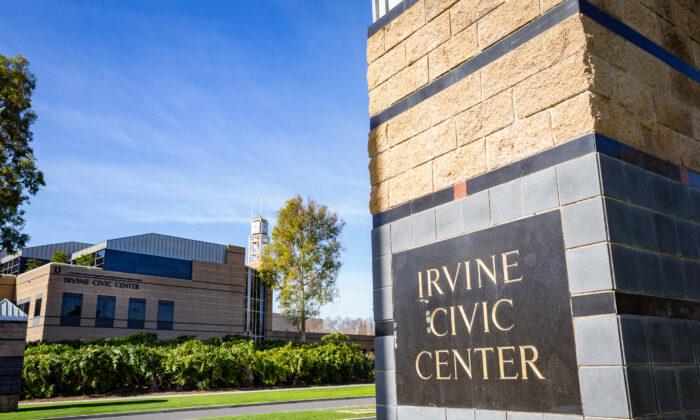Community Choice Energy agencies are failing to disclose flaws about the lynchpin of their entire business model: batteries.
Batteries supposedly make intermittent renewable energy—wind and solar—fully viable. However, the record of battery meltdowns and fires is ignored in favor of profits and false claims about “clean” energy.
The public deserves far better transparency from these local-government Community Choice energy agencies, which claim to provide greener energy at lower prices than that of incumbent investor-owned utilities, all while supposedly operating transparently.
(Nearly all Californians will be switched into a Community Choice Energy agency—comprised of local municipal jurisdictions in their area—unless they opt out to continue receiving full service from the incumbent power company. Regardless, the incumbent not only delivers each Community Choice agencies’ power, but also bills participating ratepayers on behalf of these community upstarts) [1].
Community Choice Energy’s biggest player, Southern California’s Clean Power Alliance, wants to lead the charge, rolling out battery systems in each of its 32 member municipalities under the “Power Ready” banner as a solution to mitigating wind and solar intermittency that wreaks havoc for the power grid.

Coal-Fired ‘Solar’ Power
“No problem” sales pitches by Clean Power Alliance representatives are made to city council members amid assurances that Power Ready details will be ironed out by yet-to-be-determined developers. To sweeten appearances (and to qualify for an investment tax credit) solar panels will be added to the marquee and paired with batteries.Manhattan Beach’s city council is already objecting to undefined financial conditions that could leave the city holding the bag under numerous circumstances, not to disregard concerns about battery noise and blocked views by their system’s elevated solar structure.
Gaming With Cities’ Emergency Power
Clean Power Alliance says its batteries will be programmed to charge-up “prior to scheduled outages to give host cities maximum resilience.” What about unscheduled power outages? How is “resilience” defined?The batteries are supposedly capable of operating for 4 hours. However, the system’s documentation includes text that cities should scrutinize, including “arbitrage.”
Arbitraging refers to using batteries as a way station during high and low-price times of the day and profiting on the differences. This trading will leave batteries dependent on system power because continual and predictable energy flow is required to maximize financial gains.
According to the Power Ready system’s documentation, 75 percent of the energy can be used for arbitrage activities. Accordingly, Power Ready’s 4-hour battery supply for host cities just got cut to 1 hour [2].
Regardless, arbitrage revenues could approximate $250,000 per year, or nearly $1 million every four years collectively from the Alliance’s 32 members’ Power Ready systems.
Melting Wires and Battery Fires
Lithium-ion batteries are subject to running dangerously hot, as occurred at California’s largest battery farm at Moss Landing where melted wires and scorched battery racks were discovered in September 2021, then five months later in February 2022 [3].Lithium-ion fires burn without oxygen and at nearly twice the temperature of a candle flame. Water does not extinguish these fires, and fire departments must be specially trained to handle them.
There are several suspected issues that cause battery fires, foremost is deep cycling where batteries are regularly charged to high levels and discharged to low levels. This practice maximizes profits.
Deep cycling will be amplified given the aggressive push toward a 100 percent carbon-free energy grid. Additionally, the shortage of needed batteries, caused by the tightening supply of rare metal elements, will result in ever-increasing loads on batteries that are in service.
The 2021 fire at Tesla’s large battery farm in Australia is noteworthy and troubling considering Tesla’s high quality-control standards [4].
There are many other battery failures, all of them red flags for a renewable energy future that is unsustainable without a properly operating supply of batteries at the hub of the state’s energy portfolio.
Free Lunch’s Bill
Community Choice Energy agencies may claim that battery suppliers are responsible for over-heating issues or that “everyone is using lithium-ion batteries, including investor-owned utilities.”That rationale fails to consider unregulated Community Choice’s founding claim as a superior and lower-cost alternate to regulated investor-owned power companies, rather than a repackaged junior version that shrouds itself behind a green curtain.
Community Choice’s financial stresses are rooted in the fear of a weak economy and liabilities attributable to delinquent ratepayers, jeopardizing each agency’s ongoing operations. Unlike investor-owned utilities, Community Choice Energy lacks a regulatory mechanism, which puts them at risk of bad debts.
Energy contracts are take-or-pay, meaning each Community Choice agency is obligated to pay for all of the energy it agreed to buy. All of it.
If ratepayers leave Community Choice—driven away by mounting costs and higher prices—agency staffers wonder who funds their upstart employer?
Community Choice Energy’s lifeblood is not only its opt out mechanism that legally slams consumers into the agencies, but also cash flow (from batteries) into its reserve fund account to buffer against economic downturns.
More importantly for Community Choice executive personnel, financial failure represents harsh new employment realities where bloated salaries are not readily available. The highest paid zero-energy- experience CEO among Community Choice agencies extracts just under $400,000 per year and, after next year’s cost-of-living adjustment (COLA), could take a salary exceeding that of the President of the United States [5].
Stress (battery fires) is assured as Governor Newsom remains intent on closing the state’s gas-fired generation fleet and decommissioning Diablo Canyon nuclear plant, California’s single largest in-state source of reliable, base load carbon-free power.
Community Choice Energy is betting its battery storage systems will not rupture or over-heat, exposing renewable energy’s inability to supply California with a steady supply of reliable low-cost electric power. The agencies are working with Sacramento to assure minimal disruption of their protected operations.
[1] Community Choice Energy agencies in southern California include: Clean Power Alliance (LA County and Ventura County), Clean Energy Alliance (San Diego County), Desert Community Power (Riverside County), and new arrivals Orange County Power Authority and San Diego Community Power.
[2] February 15, 2022 City of Manhattan Beach city council item to vote on recommendation to accept Clean Power Alliance Memorandum of Understanding to participate in the Power Ready program to install solar + battery storage at a critical community facility — Exhibit A: Manhattan Beach Site Assessment Overview, Joslyn Community Center, page 11, “The Power Ready program design stipulates that approximately 25% of BESS (battery energy storage system) capacity be maintained as a “Reserve Capacity” that is always ready for an unplanned outage. The remaining 75% of BESS capacity may be used for daily energy management services, notably energy arbitrage and peak demand clipping.”
(Author’s note: Charge time varies depending on load current on the system, charger current, and battery bank size).
[3] https://www.montereycountyweekly.com/blogs/news_blog/moss-landing-battery-plant-down-indefinitely-after-second-incident-in-5-months/article_fd119cb6-8ec6-11ec-882f-db4faf6c0495.html
[4] https://www.abc.net.au/news/2021-09-28/fire-at-tesla-giant-battery-project-near-geelong-investigation/100496688
[5] In 2010, before joining Community Choice Energy agency Marin Clean Energy (MCE) Dawn Weisz grossed $67,881 per year as a County of Marin Planner. Weisz had zero electricity experience. Weisz’s current annual salary is $385,604 after COLA. Assuming 10% COLA applied 01-01-2023, Weisz’s salary will be $424,164. The President of United States’ salary is $400,000. At 10% annual COLA, in two years Weisz’s (2024) salary projects to $466,580, higher than all federal employees’ salaries, including Anthony Fauci’s.





